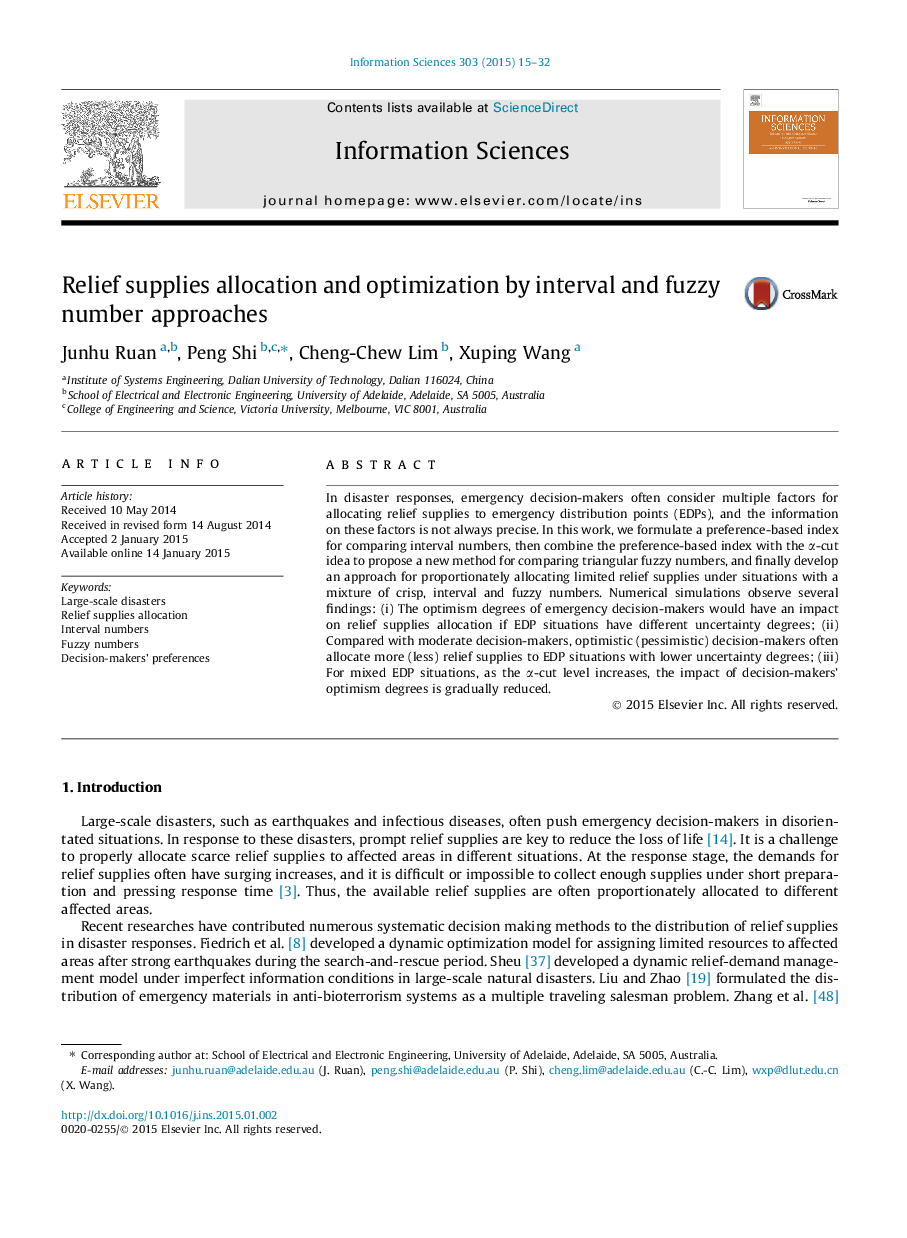| Article ID | Journal | Published Year | Pages | File Type |
|---|---|---|---|---|
| 391592 | Information Sciences | 2015 | 18 Pages |
In disaster responses, emergency decision-makers often consider multiple factors for allocating relief supplies to emergency distribution points (EDPs), and the information on these factors is not always precise. In this work, we formulate a preference-based index for comparing interval numbers, then combine the preference-based index with the αα-cut idea to propose a new method for comparing triangular fuzzy numbers, and finally develop an approach for proportionately allocating limited relief supplies under situations with a mixture of crisp, interval and fuzzy numbers. Numerical simulations observe several findings: (i) The optimism degrees of emergency decision-makers would have an impact on relief supplies allocation if EDP situations have different uncertainty degrees; (ii) Compared with moderate decision-makers, optimistic (pessimistic) decision-makers often allocate more (less) relief supplies to EDP situations with lower uncertainty degrees; (iii) For mixed EDP situations, as the αα-cut level increases, the impact of decision-makers’ optimism degrees is gradually reduced.
